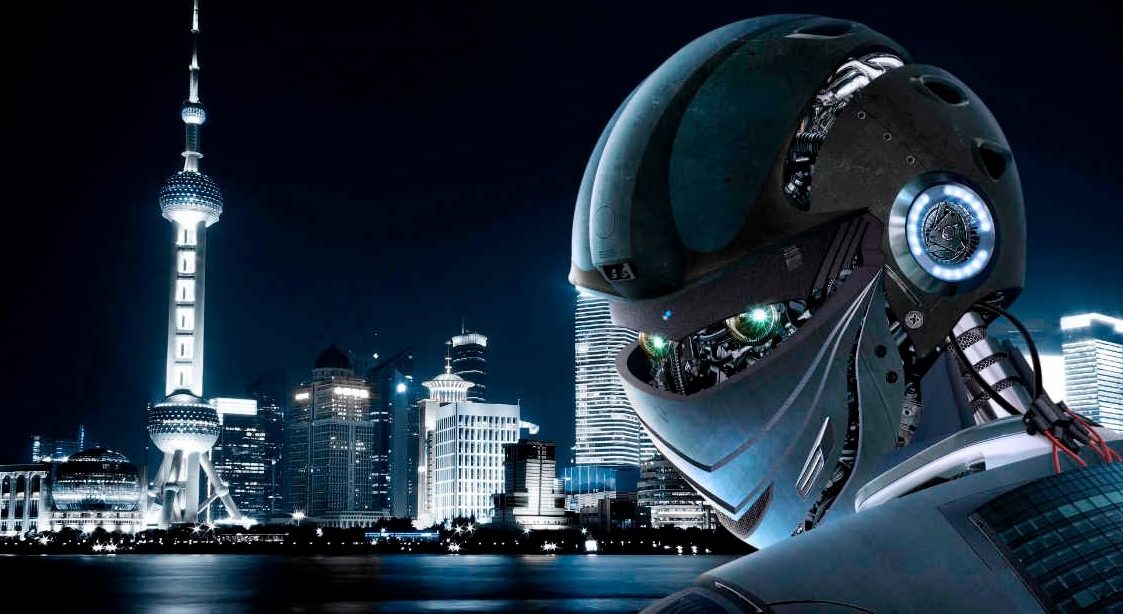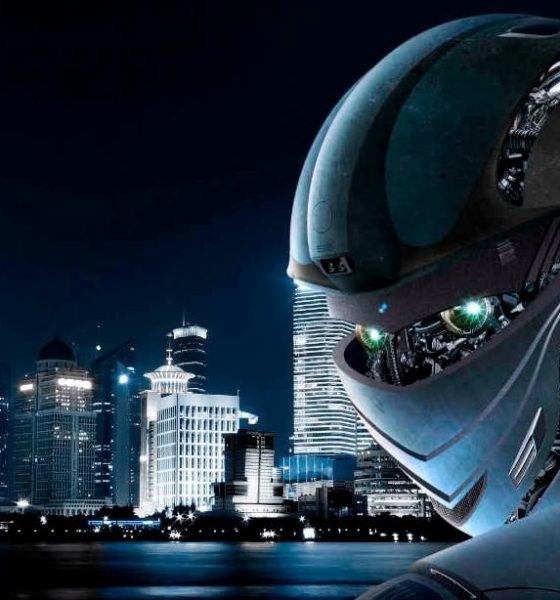

News
China looks to overtake US lead in AI research
A new study from a team of economists at the University of Toronto has concluded that China is steadily gaining on the United States in the field of artificial intelligence.
The 2017 Association for the Advancement of Artificial Intelligence (AAAI), a worldwide conference that presents the achievements of the world’s AI leaders, indicated that 23 percent of the authors of academic papers were based from China, according to the AI and International Trade study. This was a massive leap in terms of research output, considering that Chinese AI researchers only contributed 10 percent of the research output in the 2012 AAAI.
The United States, on the other hand, seems to be experiencing a steady decline in its artificial intelligence initiatives. While 34 percent of the academic papers presented in the 2017 AAAI were still American, the number shows a significant decrease from the output of the country’s researchers back in 2012, when studies from the United States represented 41 percent of the academic papers in the conference.
The University of Toronto researchers ranked the world’s most AI-active countries based on time-series data on the institutional affiliation of all authors of papers presented at the AAAI Conference. From this data, the economists concluded that China is catching up rapidly to the United States, with the former exhibiting a 13% growth in research output and the latter showing a 6% decline in academic papers from 2012-2017. The other countries in the Top 5 of the study’s rankings — the UK, Singapore, and Japan — were fairly consistent with their research output during the same period.
In a statement to the New York Times, Elsa Kania, an adjunct fellow at the Center for a New American Security, stated that the United States’s own AI initiatives during the Obama administration might have ironically triggered the artificial intelligence boom in the Asian economic superpower.
“It is remarkable to see how AI has emerged as a top priority for the Chinese leadership and how quickly things have been set into motion. The US plans and policies released in 2016 were seemingly the impetus for the formulation of China’s national AI strategy,” she said.
Not long after the release of the previous administration’s AI reports, China unveiled a plan to become a world leader in artificial intelligence by 2025. By 2030, China aims to have an AI industry worth $150 billion to its economy — one that can stoke national pride and spark breakthroughs in the field.

AI will foster an era of ‘superhuman’ workers, says Google X founder [Photo credit: iStockPhoto]
Seemingly in contrast to China, the United States appears to have tempered down its efforts to maintain its lead in the artificial intelligence field. In a statement to the New York Times, Jack Clark of Elon Musk-backed OpenAI stated that the United States currently lacks a central national strategy in AI. Unfortunately for the US, a focused national stance on intelligent technologies is something that China has in abundance.
“We may have a bunch of small initiatives inside the government that are doing good, but we don’t have a central national strategy. It is confusing that we have this technology of such obvious power and merit and we are not hearing full-throated support, including financial support,” Clark said, according to an NYT report.
As we noted in a previous report, China recently announced a massive AI-driven initiative in the form of a massive 54.87-hectare, 13.8 billion yuan ($2.1 billion) technopark in Beijing that would house companies directly involved in the development of AI technologies and machine learning. The technopark is part of China’s attempts at attaining global AI superiority by 2025.
Overall, despite warnings from Tesla and SpaceX CEO Elon Musk and prominent physicists such as Stephen Hawking, countries such as China are going full throttle towards a future that is rife with evolving, intelligent AI.

Elon Musk
Elon Musk’s X will start using a Tesla-like software update strategy
The initiative seems designed to accelerate updates to the social media platform, while maintaining maximum transparency.

Elon Musk’s social media platform X will adopt a Tesla-esque approach to software updates for its algorithm.
The initiative seems designed to accelerate updates to the social media platform, while maintaining maximum transparency.
X’s updates to its updates
As per Musk in a post on X, the social media company will be making a new algorithm to determine what organic and advertising posts are recommended to users. These updates would then be repeated every four weeks.
“We will make the new 𝕏 algorithm, including all code used to determine what organic and advertising posts are recommended to users, open source in 7 days. This will be repeated every 4 weeks, with comprehensive developer notes, to help you understand what changed,” Musk wrote in his post.
The initiative somewhat mirrors Tesla’s over-the-air update model, where vehicle software is regularly refined and pushed to users with detailed release notes. This should allow users to better understand the details of X’s every update and foster a healthy feedback loop for the social media platform.
xAI and X
X, formerly Twitter, has been acquired by Elon Musk’s artificial intelligence startup, xAI last year. Since then, xAI has seen a rapid rise in valuation. Following the company’s the company’s upsized $20 billion Series E funding round, estimates now suggest that xAI is worth tens about $230 to $235 billion. That’s several times larger than Tesla when Elon Musk received his controversial 2018 CEO Performance Award.
As per xAI, the Series E funding round attracted a diverse group of investors, including Valor Equity Partners, Stepstone Group, Fidelity Management & Research Company, Qatar Investment Authority, MGX, and Baron Capital Group, among others. Strategic partners NVIDIA and Cisco Investments also continued support for building the world’s largest GPU clusters.
News
Tesla FSD Supervised wins MotorTrend’s Best Driver Assistance Award
The decision marks a notable reversal for the publication from prior years, with judges citing major real-world improvements that pushed Tesla’s latest FSD software ahead of every competing ADAS system.

Tesla’s Full Self-Driving (Supervised) system has been named the best driver-assistance technology on the market, earning top honors at the 2026 MotorTrend Best Tech Awards.
The decision marks a notable reversal for the publication from prior years, with judges citing major real-world improvements that pushed Tesla’s latest FSD software ahead of every competing ADAS system. And it wasn’t even close.
MotorTrend reverses course
MotorTrend awarded Tesla FSD (Supervised) its 2026 Best Tech Driver Assistance title after extensive testing of the latest v14 software. The publication acknowledged that it had previously criticized earlier versions of FSD for erratic behavior and near-miss incidents, ultimately favoring rivals such as GM’s Super Cruise in earlier evaluations.
According to MotorTrend, the newest iteration of FSD resolved many of those shortcomings. Testers said v14 showed far smoother behavior in complex urban scenarios, including unprotected left turns, traffic circles, emergency vehicles, and dense city streets. While the system still requires constant driver supervision, judges concluded that no other advanced driver-assistance system currently matches its breadth of capability.
Unlike rival systems that rely on combinations of cameras, radar, lidar, and mapped highways, Tesla’s FSD operates using a camera-only approach and is capable of driving on city streets, rural roads, and freeways. MotorTrend stated that pure utility, the ability to handle nearly all road types, ultimately separated FSD from competitors like Ford BlueCruise, GM Super Cruise, and BMW’s Highway Assistant.
High cost and high capability
MotorTrend also addressed FSD’s pricing, which remains significantly higher than rival systems. Tesla currently charges $8,000 for a one-time purchase or $99 per month for a subscription, compared with far lower upfront and subscription costs from other automakers. The publication noted that the premium is justified given FSD’s unmatched scope and continuous software evolution.
Safety remained a central focus of the evaluation. While testers reported collision-free operation over thousands of miles, they noted ongoing concerns around FSD’s configurable driving modes, including options that allow aggressive driving and speeds beyond posted limits. MotorTrend emphasized that, like all Level 2 systems, FSD still depends on a fully attentive human driver at all times.
Despite those caveats, the publication concluded that Tesla’s rapid software progress fundamentally reshaped the competitive landscape. For drivers seeking the most capable hands-on driver-assistance system available today, MotorTrend concluded Tesla FSD (Supervised) now stands alone at the top.
News
Elon Musk’s Grokipedia surges to 5.6M articles, almost 79% of English Wikipedia
The explosive growth marks a major milestone for the AI-powered online encyclopedia, which was launched by Elon Musk’s xAI just months ago.

Elon Musk’s Grokipedia has grown to an impressive 5,615,201 articles as of today, closing in on 79% of the English Wikipedia’s current total of 7,119,376 articles.
The explosive growth marks a major milestone for the AI-powered online encyclopedia, which was launched by Elon Musk’s xAI just months ago. Needless to say, it would only be a matter of time before Grokipedia exceeds English Wikipedia in sheer volume.
Grokipedia’s rapid growth
xAI’s vision for Grokipedia emphasizes neutrality, while Grok’s reasoning capabilities allow for fast drafting and fact-checking. When Elon Musk announced the initiative in late September 2025, he noted that Grokipedia would be an improvement to Wikipedia because it would be designed to avoid bias.
At the time, Musk noted that Grokipedia “is a necessary step towards the xAI goal of understanding the Universe.”
Grokipedia was launched in late October, and while xAI was careful to list it only as Version 0.1 at the time, the online encyclopedia immediately earned praise. Wikipedia co-founder Larry Sanger highlighted the project’s innovative approach, noting how it leverages AI to fill knowledge gaps and enable rapid updates. Netizens also observed how Grokipedia tends to present articles in a more objective manner compared to Wikipedia, which is edited by humans.
Elon Musk’s ambitious plans
With 5,615,201 total articles, Grokipedia has now grown to almost 79% of English Wikipedia’s article base. This is incredibly quick, though Grokipedia remains text-only for now. xAI, for its part, has now updated the online encyclopedia’s iteration to v0.2.
Elon Musk has shared bold ideas for Grokipedia, including sending a record of the entire knowledge base to space as part of xAI’s mission to preserve and expand human understanding. At some point, Musk stated that Grokipedia will be renamed to Encyclopedia Galactica, and it will be sent to the cosmos.
“When Grokipedia is good enough (long way to go), we will change the name to Encyclopedia Galactica. It will be an open source distillation of all knowledge, including audio, images and video. Join xAI to help build the sci-fi version of the Library of Alexandria!” Musk wrote, adding in a later post that “Copies will be etched in stone and sent to the Moon, Mars and beyond. This time, it will not be lost.”








